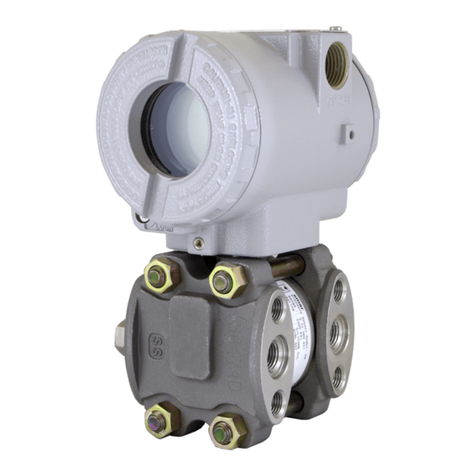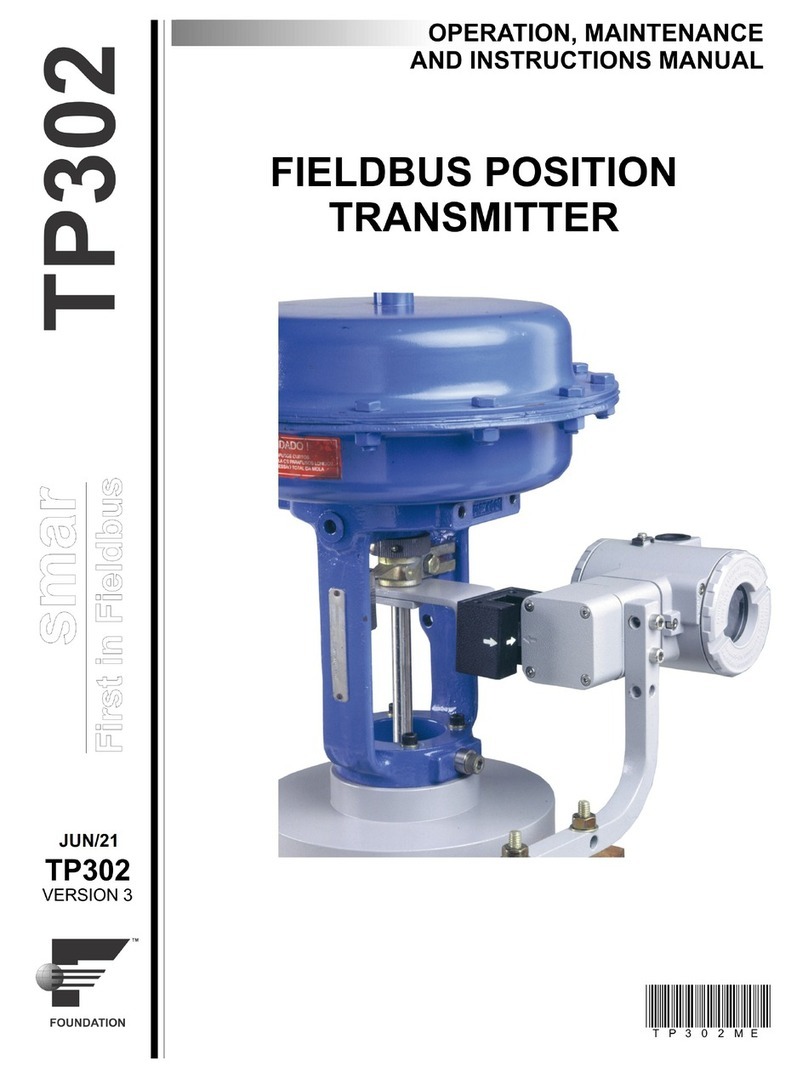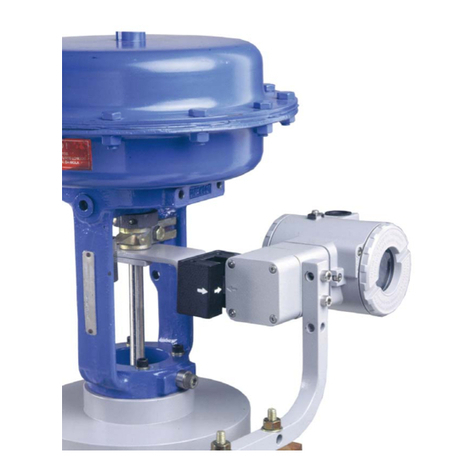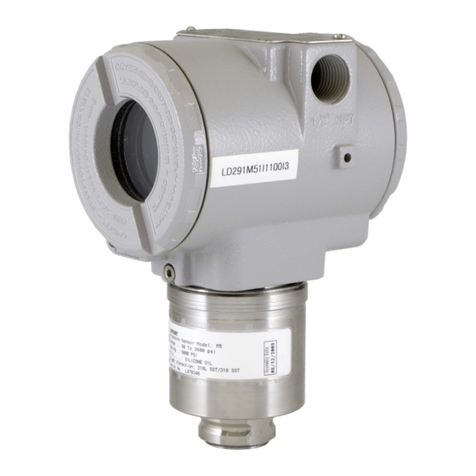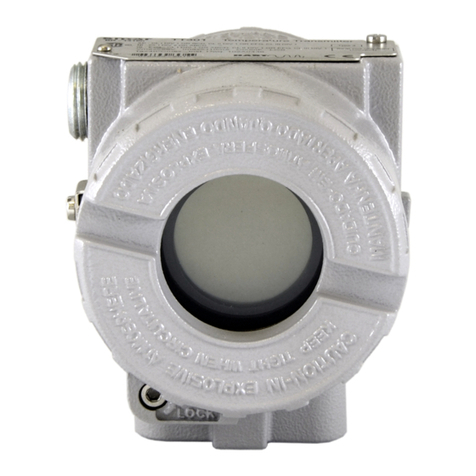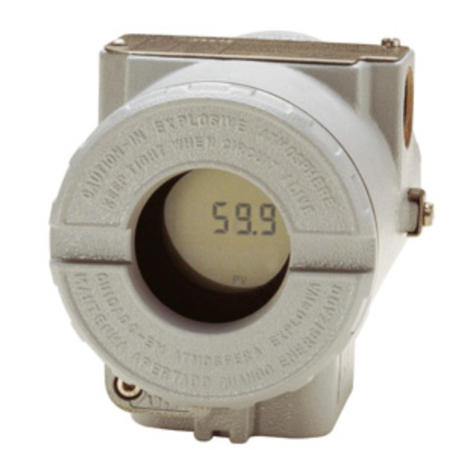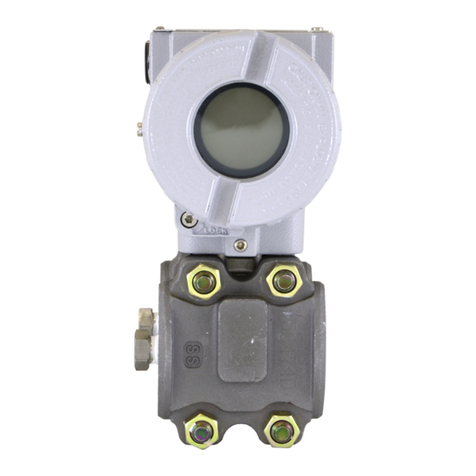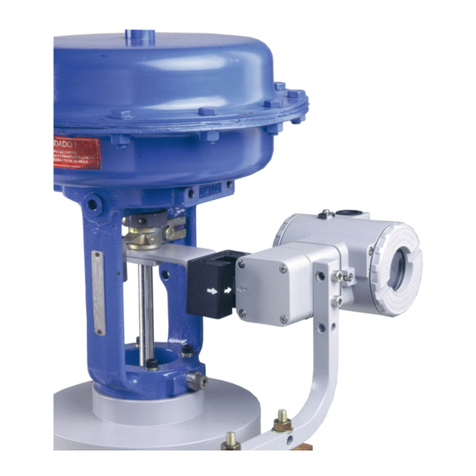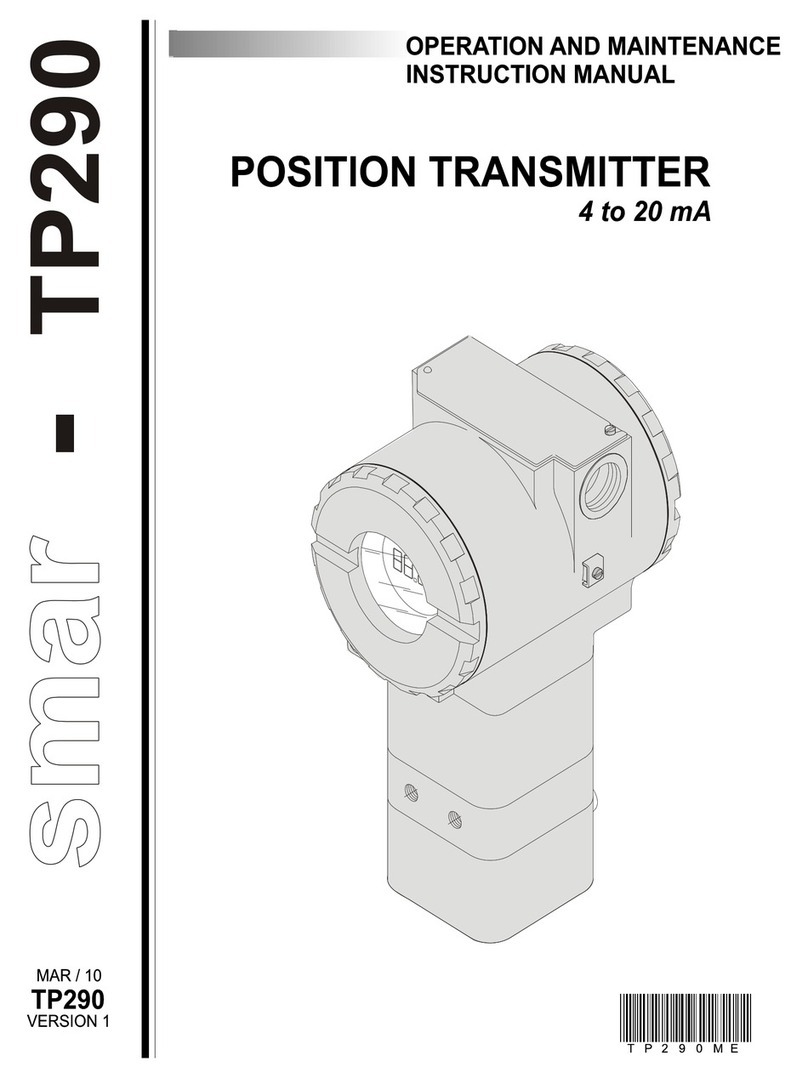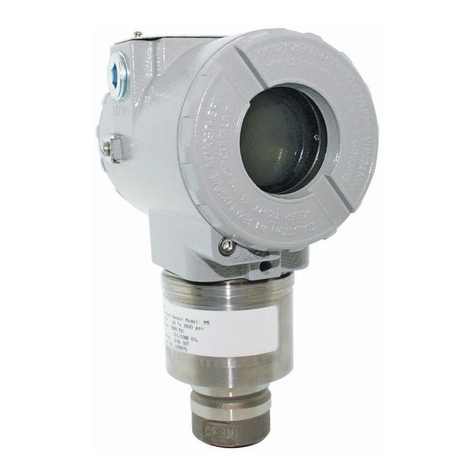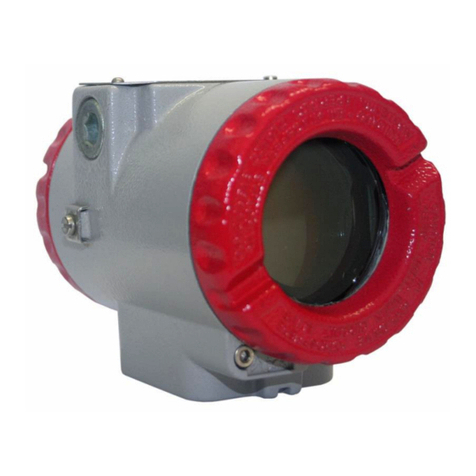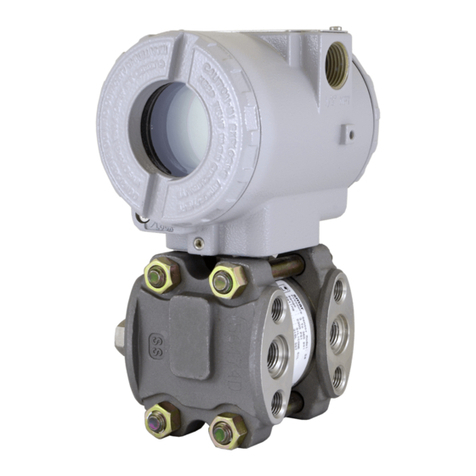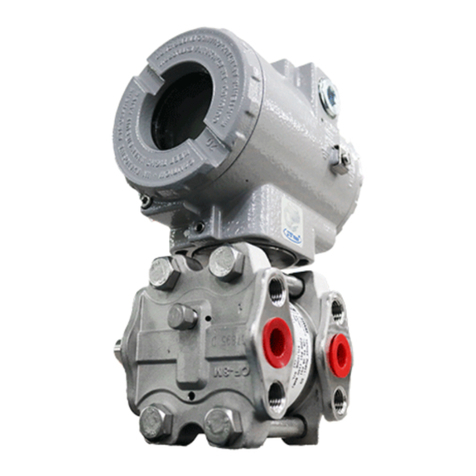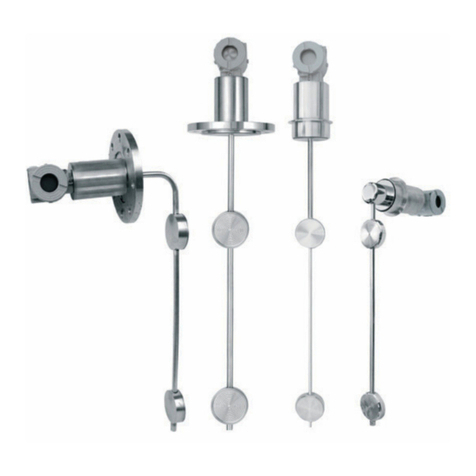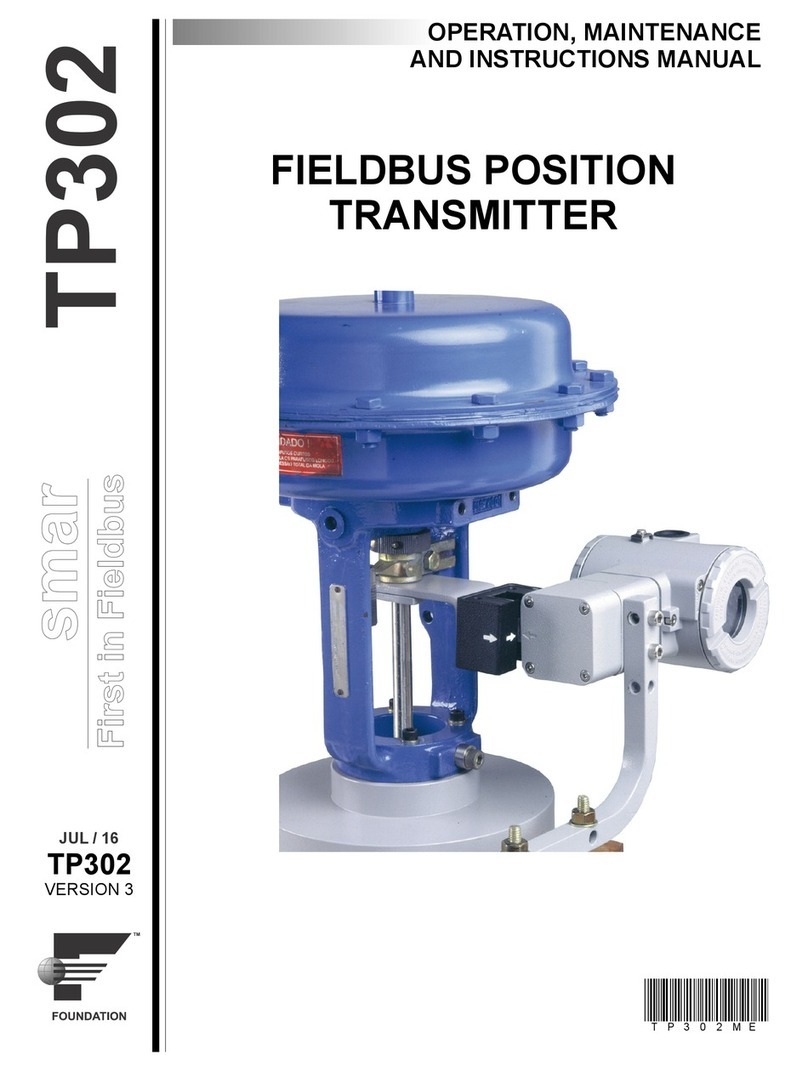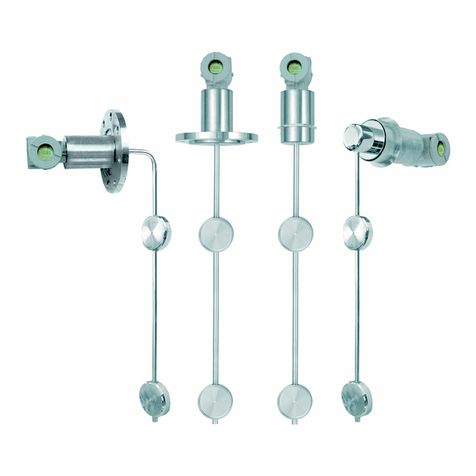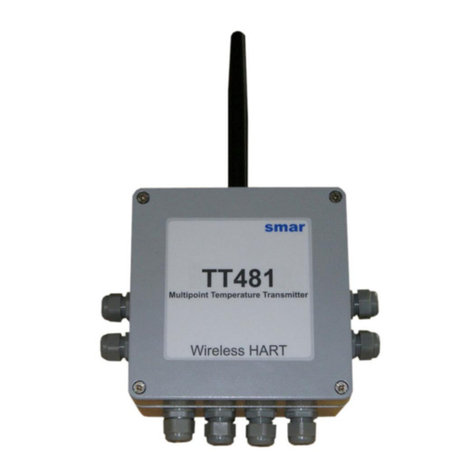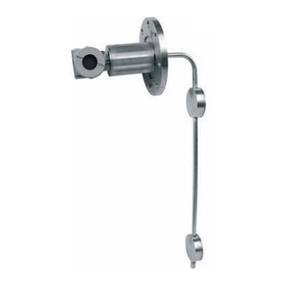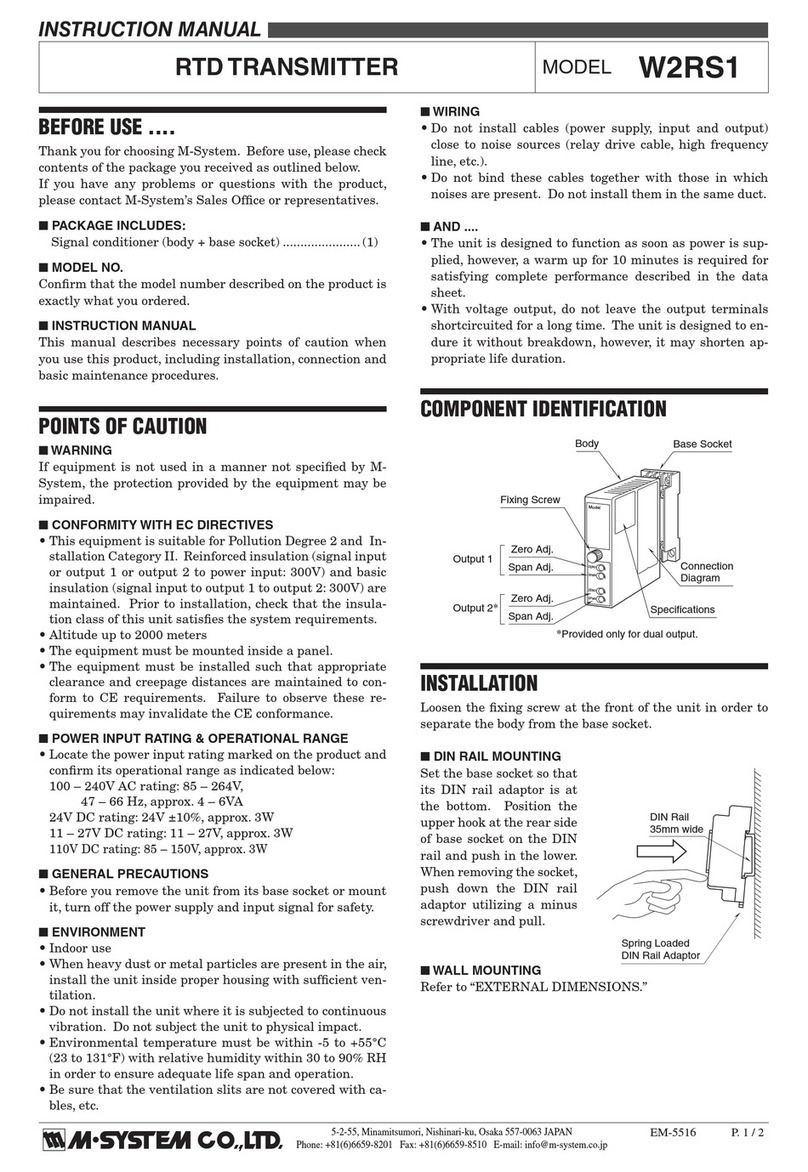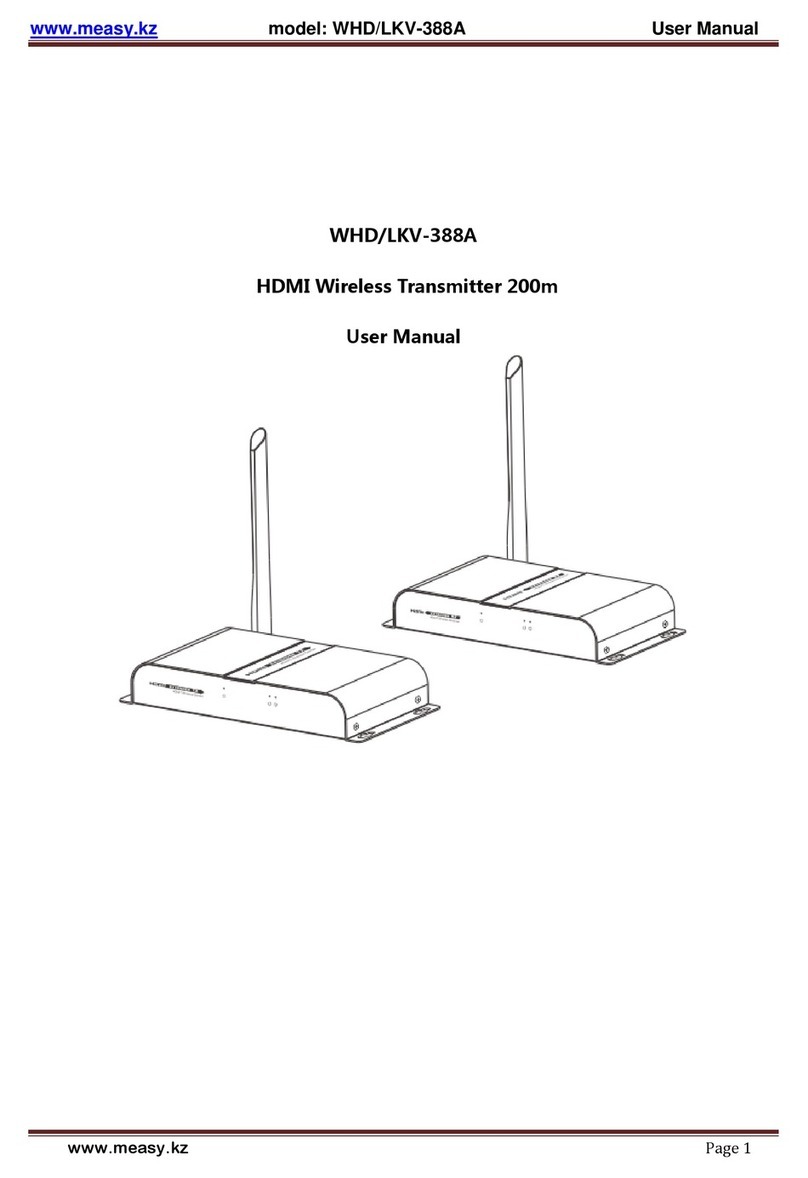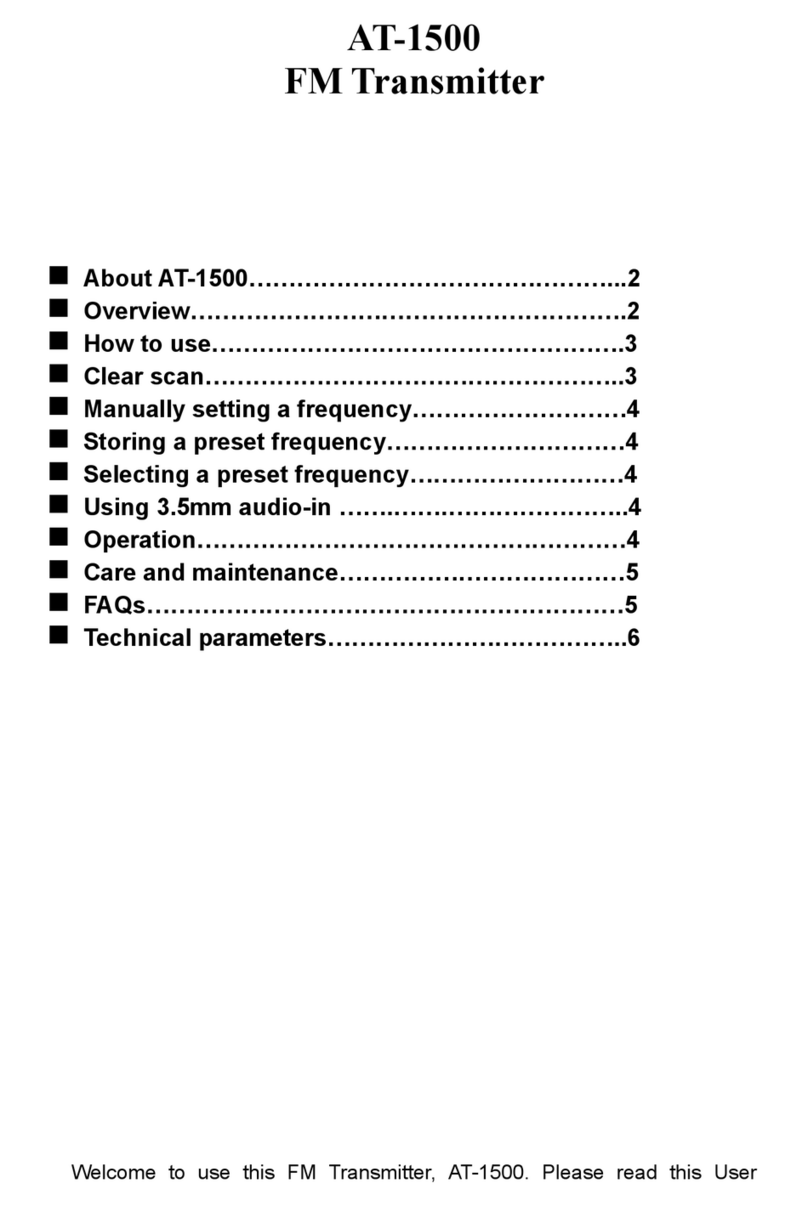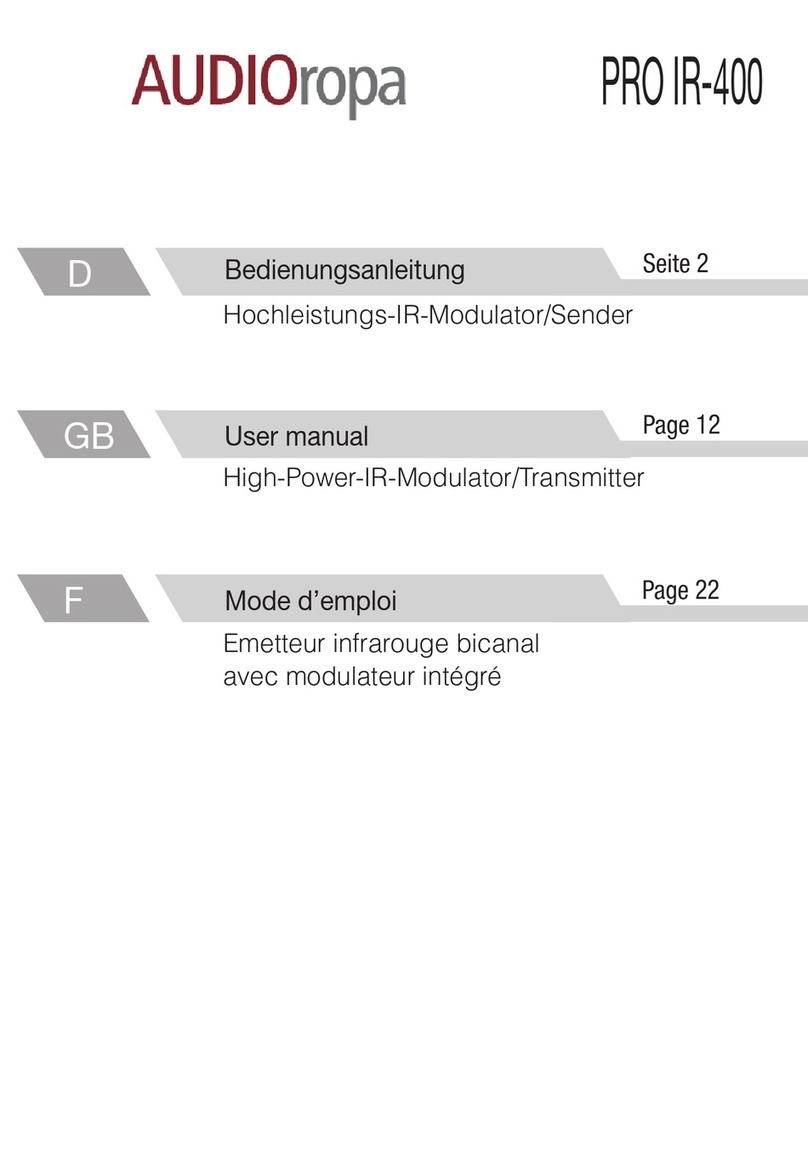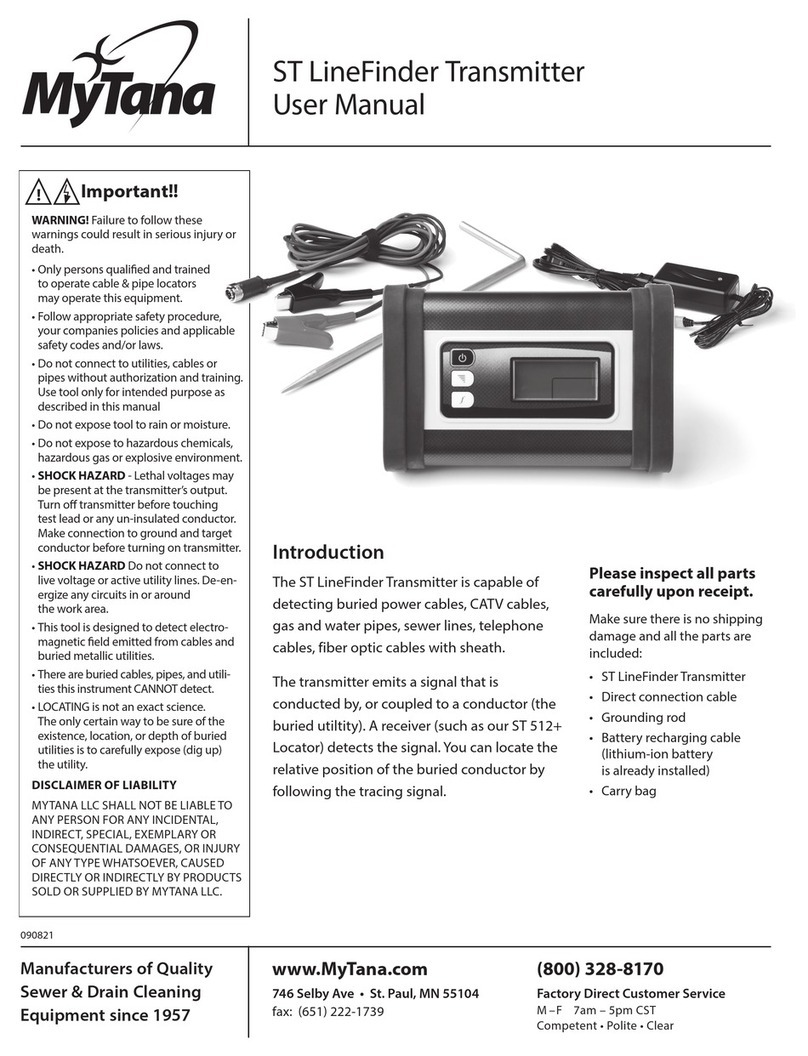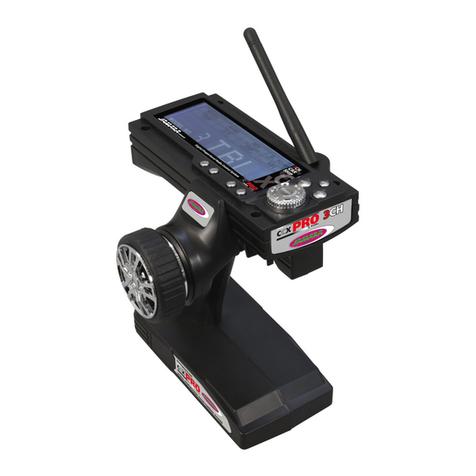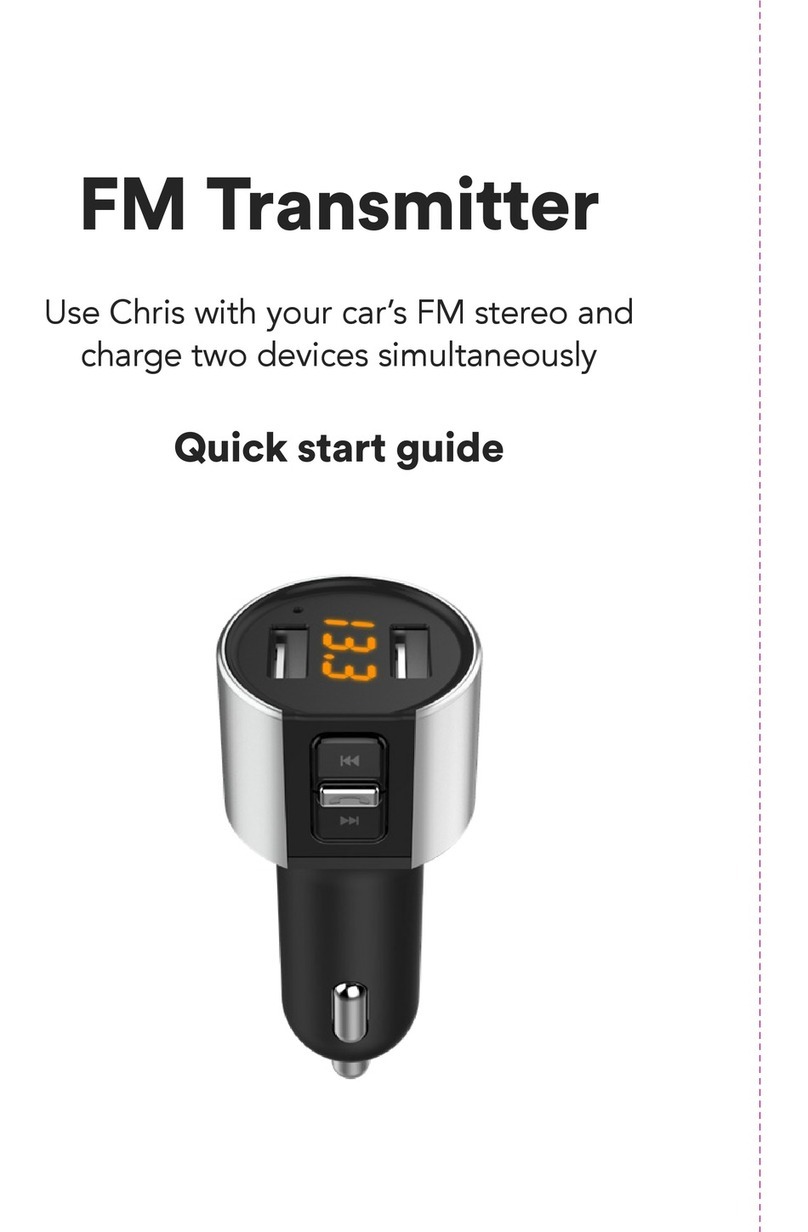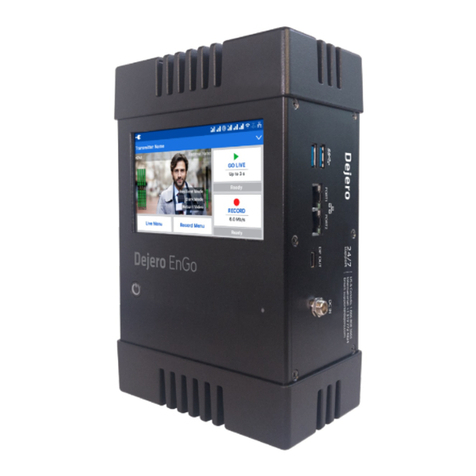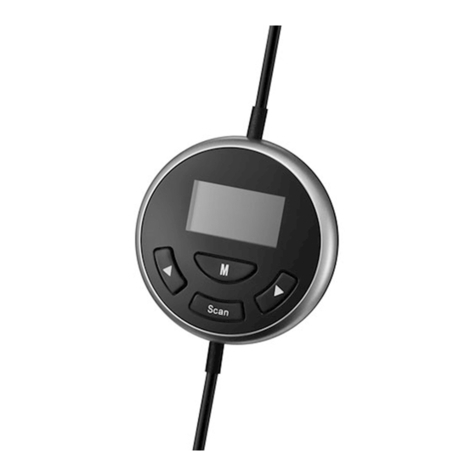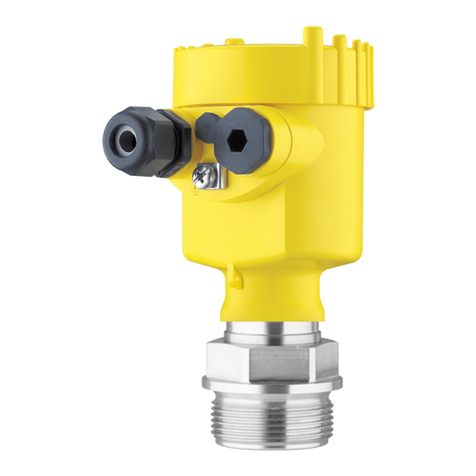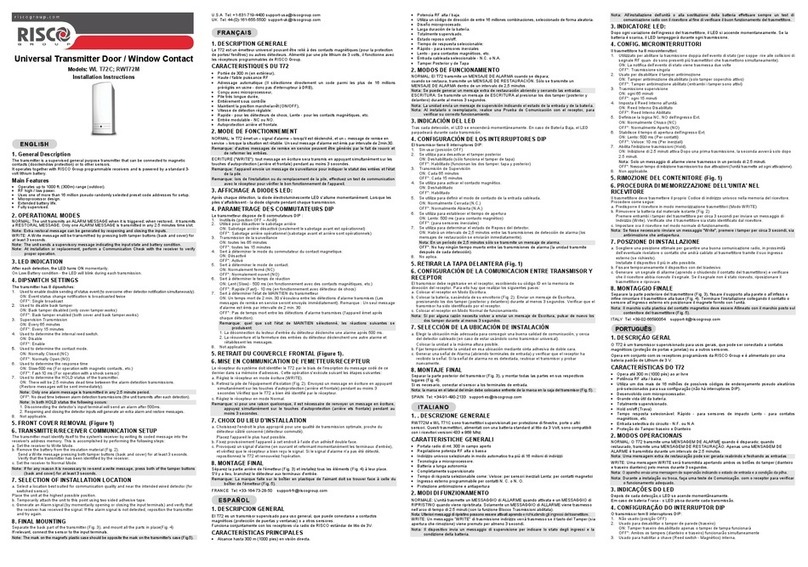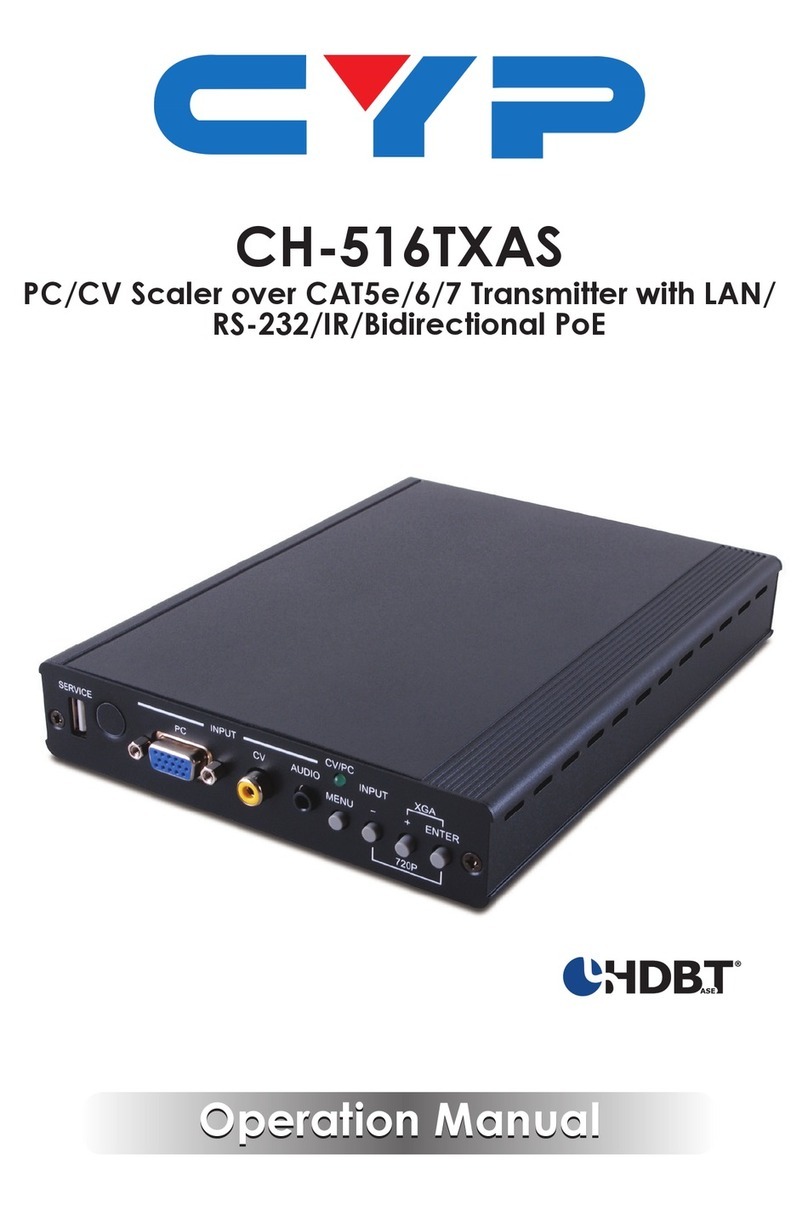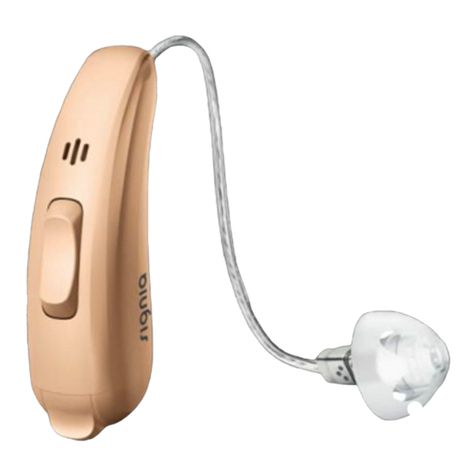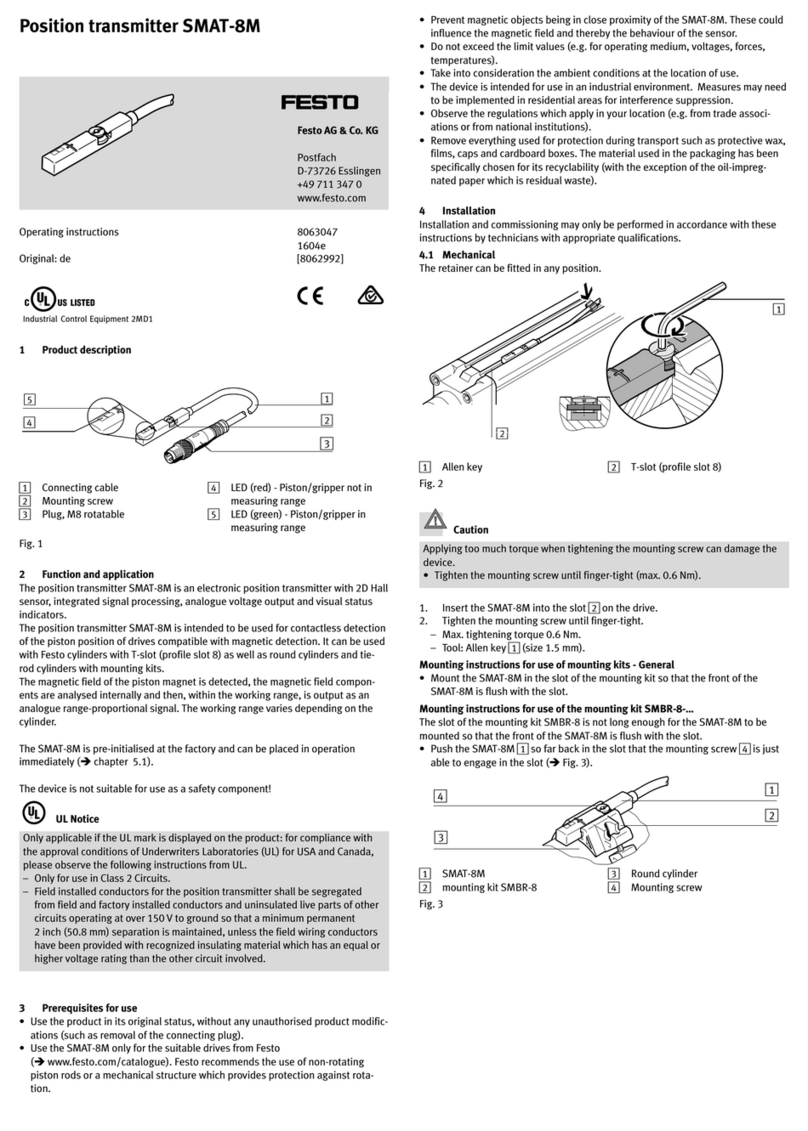SMAR LD400 Manual

LD400
Smart Pressure Transmitter
OPERATION AND MAINTENANCE
INSTRUCTION / MANUAL
L D 4 0 0 M E

web: www.smar.com/contactus.asp
www.smar.com
Specifications and information are subject to change without notice.
Up-to-date address information is available on our website.
smar

Introduction
I
INTRODUCTION
LD400 HART®is a Smart Pressure Transmitter for differential, absolute, gauge, level and flow
measurements.
Diferential Transmitter – LD400D and LD400H
This model measures the differential pressure applied in the sensor. Normally, both sides of the
sensor are connected to the process and if the selected output function is linear, the measurement
is the differential pressure. If the selected output function is a square root, the measurement is a
fluid flow.
Flow Transmitter – LD400D and LD400H
The differential pressure is generated by an flow primary element and the square root function
supplies the measurement flow.
Gauge Pressure Transmitter – LD400M
This model has the Lower Side Input connected to a blind flange and open to atmosphere.
Therefore, this model measures the pressure relative to atmosphere and the output function can be
linear or linearized by the linearization table.
Absolut Pressure Transmitter - LD400A
This model has the Low Side Input connected to a blind flange and it is open to atmosphere.
Therefore, this model measures the pressure relative to local pressure and the output function can
be linear or linearized by the linearization table.
Level Transmitter – LD400L
This model is available as a flange mounted unit with a flush diaphragm for direct installation on
vessels. Extended diaphragms are also available.
The LD400 series use HART® technology. This instruments can be configured through Smar
configuration softwares or others supplier. The local adjustment is enable for all the LD400 series.
With magnetic tools is possible to configure the zero and the span, to alter the measurement range,
to alter the unit of measured pressure, to select the square root function, to operate the totaled value
or in a control loop.
With the AssetView from Smar is possible to do the diagnoses management field’s intrumented to
aid in the reative, preventive, predictive and proactive.

LD400 - Operation and Maintenance Instruction Manual
II
Waiver of responsibility
The contents of this manual abides by the hardware and software used on the current equipment
version. Eventually there may occur divergencies between this manual and the equipment. The
information from this document are periodica
lly reviewed and the necessary or identified corrections
will be included in the following editions. Suggestions for their improvement are welcome.
Warning
For more objectivity and clarity, this manual does not contain all the detailed information on th
e
product and, in addition, it does not cover every possible mounting, operation or maintenance
cases.
Before installing and utilizing the equipment, check if the model of the acquired equipment complies
with the technical requirements for the application. This checking is the user’s responsibility.
If the user needs more information, or on the event of specific problems not specified or treated in
this manual, the information should be sought from Smar. Furthermore, the user recognizes that the
contents
of this manual by no means modify past or present agreements, confirmation or judicial
relationship, in whole or in part.
All of Sm
ar’s obligation result from the purchasing agreement signed between the parties, which
includes the complete and sole valid
warranty term. Contractual clauses related to the warranty are
not limited nor extended by virtue of the technical information contained in this manual.
Only qualified personnel are allowed to participate in the activities of mounting, electrical connecti
on,
startup and maintenance of the equipment. Qualified personnel are understood to be the persons
familiar with the mounting, electrical connection, startup and operation of the equipment or other
similar apparatus that are technically fit for their wor
k. Smar provides specific training to instruct and
qualify such professionals. However, each country must comply with the local safety procedures,
legal provisions and regulations for the mounting and operation of electrical installations, as well as
with
the laws and regulations on classified areas, such as intrinsic safety, explosion proof, increased
safety and instrumented safety systems, among others.
The user is responsible for the incorrect or inadequate handling of equipments run with pneumatic
or h
ydraulic pressure or, still, subject to corrosive, aggressive or combustible products, since their
utilization may cause severe bodily harm and/or material damages.
The field equipment referred to in this manual, when acquired for classified or hazardous
areas, has
its certification void when having its parts replaced or interchanged without functional and approval
tests by Smar or any of Smar authorized dealers, which are the competent companies for certifying
that the equipment in its entirety meets the
applicable standards and regulations. The same is true
when converting the equipment of a communication protocol to another. In this case, it is necessary
sending the equipment to Smar or any of its authorized dealer. Moreover, the certificates are
different and the user is responsible for their correct use.
Always respect the instructions provided in the Manual. Smar is not responsible for any losses
and/or damages resulting from the inadequate use of its equipments. It is the user’s responsibility
to
know and apply the safety practices in his country.

Introduction
III
TRANSMITTER GENERAL VIEW
The LD400 HART®uses a highly proven technique for pressure measuring by capacitance reading.
The block diagram of the LD400 HART®pressure transmitter is shown below.
Isolator
EEPROM with Sensor Data
Temperature Data
Resonant Oscillator
Digital
Reading
Zero/Span Local
Adjustment
- D/A Converter
- HART Modem
- LCD Controller
- Mathematical
Co-processor
- Range
- Special Functions
- PID
- Output Controller
- Communication
- HART
- Advanced Diagnostic
- Firmware Update
Process Unit
Protocol
SignalConditioner
Input/Output
PH PL
Digital
Sensor
Glass Metalized
Surface (4)
Ceramics
Filling Fluid (3)
Isolating
Diaphragm (2)
Sensor
Diaphragm (1)
HT3012
4 - 20mA
In the cell center is the sensor diaphragm (1). This diaphragm flexes in response to the different
pressures applied on the LOW and HIGH sides of the cell (PL and PH). These pressures are directly
applied on the isolator diaphragms (2), whose function is to isolate the sensor process and supply
high resistance against corrosion caused by process fluids. The pressure is transmitted directly to
the sensor diaphragm through the filling fluid (3) and causes its deflection. The sensor diaphragm is
a mobile electrode whose two metal surfaces (4) are stable electrodes. A deflection on the sensor
diaphragm is read by the capacitance variation between both stable and mobile electrodes.
The resonance oscillator reads the capacitance variations between the mobile and the stable boards
and generates a pressure output equivalent to the detected capacitance variation. This pressure
value is informed in compliance with the transmitter communication protocol. As the conversion
process does not involve an A/D converter, any errors or deviations are eliminated during the
process. Temperature compensation is done by a sensor, which combined with a precision sensor,
results in high accuracy and range.
The process variable, as well as the diagnostic monitoring and information, are supplied by the
digital communication protocol. The LD400 is available in the HART®communication protocol.
Read carefully these instructions for better use of the LD400 HART®. Smar pressure transmitters
are protected by American patents n. 6,433,791 and 6,621,443.

LD400 - Operation and Maintenance Instruction Manual
IV
Acronyms and Abbreviations
Acronym /
Abbreviation
Designation
Description
HFT
Hardware Fault Tolerance
The hardware fault tolerance of the device.
This is the capability of a functional unit to continue the execution
of the demanded function in case of faults or deviations.
MTBF
Mean Time Between Failures
This is the mean time period between two failures.
MTTR
Mean Time To Repair
This is the mean time period between the occurrence of a failure
in a device or system and its repair.
PFD
Probability of Failure on Demand
This is the likelihood of dangerous safety function failures
occurring on demand.
PFDAVG
Average Probability of Failure
This is the average likelihood of dangerous safety function
failures occurring on demand.
SIL Safety Integrity Level
The International Standard IEC 61508 specifies four discrete
safety integrity levels (SIL 1 to SIL 4). Each level corresponds to
a specific probability range regarding the failure of a safety
function. The higher the safety integrity level of the safety-related
systems, the lower likelihood of non-execution of the demanded
safety functions.
SFF
Safe Failure Fraction
The fraction of non-hazardous failures, e.g. the fraction of failures
without the potential to set the safety-
related system to a
dangerous undetected state.
Low Demand Mode Low Demand Mode of Operation Measuring mode with low demand rate, in which the demand rate
for the safety-related system is not more than once a year and is
not greater than double the frequency of the periodic test.
DTM
Device Type Manager
The DTM is a software module which provides functions for
accessing device parameters, configuring and operating the
devices and diagnosing problems. By itself, a DTM
is not
executable software.
LRV
Device Configuration
Lower Range Value of the measurement range.
URV
Device Configuration
Upper Range Value of the measurement range.
Multidrop Multdrop Mode
In multidrop mode, up to 15 field devices are connected in
parallel to a single wire pair. The analog current signal serves just
to energize the two-
wire devices providing a fixed current of 4
mA.

Table of Contents
V
TABLE OF CONTENTS
SECTION 1 - INSTALLATION ..................................................................................................................1.1
GENERAL...................................................................................................................................................................1.1
MOUNTING................................................................................................................................................................1.1
ELECTRONIC HOUSING.........................................................................................................................................1.10
WIRING ....................................................................................................................................................................1.10
TYPICAL INSTALLATION FOR HART® PROTOCOL..............................................................................................1.12
INSTALLATION IN HAZARDOUS LOCATIONS......................................................................................................1.15
EXPLOSION/FLAME PROOF..................................................................................................................................1.15
INTRINSICALLY SAFE ............................................................................................................................................1.15
SECTION 2 - FUNCTIONAL DESCRIPTION............................................................................................2.1
FUNCIONAL DESCRIPTION –HARDWARE............................................................................................................2.2
FUNCTIONAL DESCRIPTION –LD400 HART®SOFTWARE..................................................................................2.4
FUNCTIONAL DESCRIPTION - DISPLAY (LCD)......................................................................................................2.7
SECTION 3 - TECHNICAL CHARACTERISTICS.....................................................................................3.1
ORDERING CODE.....................................................................................................................................................3.7
SECTION 4 - CONFIGURATION ..............................................................................................................4.1
GENERAL...................................................................................................................................................................4.1
CONFIGURATION FEATURES.................................................................................................................................4.4
MANUFACTURING DATA AND IDENTIFICATION...................................................................................................4.4
PRIMARY VARIABLE TRIM –PRESSURE...............................................................................................................4.5
PRIMARY VARIABLE CURRENT TRIM....................................................................................................................4.6
TEMPERATURE TRIM...............................................................................................................................................4.6
TRANSMITTER ADJUSTMENT TO THE WORKING RANGE..................................................................................4.6
ENGINEERING UNIT SELECTION ...........................................................................................................................4.7
TRANSFER FUNCTION FOR FLOW MEASUREMENT ...........................................................................................4.9
TABLE POINTS........................................................................................................................................................4.10
TOTALIZATION CONFIGURATION ........................................................................................................................4.10
PID CONTROLLER CONFIGURATION...................................................................................................................4.12
EQUIPMENT CONFIGURATION.............................................................................................................................4.13
EQUIPMENT MAINTENANCE.................................................................................................................................4.14
SECTION 5 - PROGRAMMING USING LOCAL ADJUSTMENT..............................................................5.1
THE MAGNETIC TOOL..............................................................................................................................................5.1
LOCAL ADJUSTMENT...............................................................................................................................................5.3
SIMPLE LOCAL ADJUSTMENT ................................................................................................................................5.3
COMPLETE LOCAL ADJUSTMENT..........................................................................................................................5.4
SIMULATION [SIMUL]................................................................................................................................................5.6
RANGE [RANGE].......................................................................................................................................................5.7
PRESSURE TRIM [TRIM]........................................................................................................................................5.12
CONFIGURATION [CONF]......................................................................................................................................5.14
OPERATION [OPER] ...............................................................................................................................................5.21
EQUIPMENT CONFIGURED ON TRANSMITTER MODE......................................................................................................5.21
EQUIPMENT CONFIGURED ON CONTROLLER MODE.......................................................................................................5.22
QUIT [QUIT] .............................................................................................................................................................5.24
SECTION 6 - MAINTENANCE..................................................................................................................6.1
DIAGNOSTIC USING CONFIGURATION TOOL.......................................................................................................6.1
ERROR MESSAGES .................................................................................................................................................6.1
DIAGNOSTIC VIA TRANSMITTER............................................................................................................................6.2
SENSOR ...................................................................................................................................................................................6.4
ELECTRONIC CIRCUIT............................................................................................................................................................6.6
REASSEMBLY PROCEDURE...................................................................................................................................6.6
SENSOR ...................................................................................................................................................................................6.6
ELECTRONIC CIRCUIT............................................................................................................................................................6.7

LD400 - Operation and Maintenance Instruction Manual
VI
INTERCHANGEABILITY............................................................................................................................................6.8
RETURNING MATERIALS.........................................................................................................................................6.8
LIFETIME TRANSMITTER.........................................................................................................................................6.8
ACESSORIES ............................................................................................................................................................6.9
SPARE PARTS LIST..................................................................................................................................................6.9
ORDERING CODE...................................................................................................................................................6.11
HART®SPECIAL UNITS..........................................................................................................................................6.16
SECTION 7 - SAFETY INSTRUMENTED SYSTEMS ...............................................................................7.1
INTRODUCTION........................................................................................................................................................7.1
SAFETY STANDARD.................................................................................................................................................7.1
APPLICATION STANDARDS.....................................................................................................................................7.2
SAFETY FUNCTION..................................................................................................................................................7.2
FUNCTIONAL SAFETY PROPERTIES .....................................................................................................................7.3
ENVIRONMENTAL PROPERTIES ............................................................................................................................7.3
INSTALLATION..........................................................................................................................................................7.3
MODES OF OPERATION..........................................................................................................................................7.3
CONFIGURATION MODE ENABLING PROCEDURE..............................................................................................7.4
LD400 HART®SIS TECHNICAL CHARACTERISTICS.............................................................................................7.4
MAINTENANCE .........................................................................................................................................................7.6
APPENDIX A - CERTIFICATIONS INFORMATION.................................................................................A.1
EUROPEAN DIRECTIVE INFORMATION.................................................................................................................A.1
HAZARDOUS LOCATIONS CERTIFICATIONS........................................................................................................A.1
SOUTH AMERICA CERTIFICATION .......................................................................................................................................A.1
EUROPEAN CERTIFICATIONS............................................................................................................................................... A.2
IDENTIFICATION PLATE...........................................................................................................................................A.5
APPENDIX B –SRF –SERVICE REQUEST FORM................................................................................. B.1

Installation Flowchart
VII
Installation Flowchart
Was the transmitter
configured on the bench
to match the application?
Configure the transmitter
(Section 1 and 3)
Configure the measuring range
to 0% (4mA) and 100%
(20mA) (Section 3)
Configure the Fail-Safe
value (Section 3)
Configure the Damping (Section 3)
Configure the LCD reading
(Section 3)
Apply the pressure
Is the reading correct?
See manual
(Section 5) - Maintenance
Start
No
Yes
OK
Apply the Zero Trim
Is the impulse line wett leg?
Install the transmitter on the field
following the instructions below.
Install the transmitter preferably
on weather- protected areas.
Install the transmitter (mechanically
and electrically) according to the
application after checking the best
position for the LCD (Section 5)
Check the area classification
and its practices
Power the transmitter properly.
Did you correct the
transmitter reading?
Is the transmitter
reading correct?
Yes No
No
Yes
Yes
No
Yes
No

LD400 - Operation and Maintenance Instruction Manual
VIII

Section 1
1.1
INSTALLATION
General
NOTE
The installation carried out in hazardous areas should follow the recommendations of the
IEC60079-14 standard.
The overall accuracy of a flow, level, or pressure measurement depends on several variables.
Although the transmitter has an outstanding performance, proper installation is essential to
maximize its efficiency. Among all factors, which may affect transmitter accuracy, environmental
conditions are the most difficult to control. There are, however, ways of reducing the effects of
temperature, humidity and vibration.
The LD400 HART®has a built-in temperature sensor to compensate for temperature variations. At
the factory, each transmitter is submitted to a temperature cycle, and the characteristics under
different temperatures are recorded in the transmitter memory. At the field, this feature minimizes
the temperature variation effect.
Putting the transmitter in areas protected from extreme environmental changes can minimize
temperature fluctuation effects. In warm environments, the transmitter should be installed to avoid,
as much as possible, direct exposure to the sun. Installation close to lines and vessels subjected to
high temperatures should also be avoided.
Use longer sections of impulse piping between tap and transmitter whenever the process fluid is at
high temperatures. Use of sunshades or heat shields to protect the transmitter from external heat
sources should be considered, if necessary.
Humidity is fatal to electronic circuits. In areas subjected to high relative humidity, the O-rings for the
electronic housing covers must be correctly placed and the covers must be completely closed by
tighten them by hand until you feel the O-rings being compressed. Do not use tools to close the
covers. Removal of the electronics cover in the field should be reduced to the minimum necessary,
since each time it is removed; the circuits are exposed to the humidity.
The electronic circuit is protected by a humidity proof coating, but frequent exposures to humidity
may affect the protection provided. It is also important to keep the covers tightened in place. Every
time they are removed, the threads are exposed to corrosion, since painting cannot protect these
parts. Sealing methods should be employed on conduit entering the transmitter.
Although the transmitter is virtually insensitive to vibration, installation close to pumps, turbines or
other vibrating equipment should be avoided. If entirely innevitable, install the transmitter on a solid
basis and use flexible vibration-proof hoses. Proper winterization (freeze protection) should be
employed to prevent freezing within the measuring chamber, since this will result in an inoperative
transmitter and could even damage the cell.
NOTE
When installing or storing the level transmitter, the diaphragm must be protected to avoid
scratching denting or perforation of its surface.
NOTE
For a better performance the installation should not present degradation problems of the sign 4 to
20 mA. For detection of this problem, the operator should always certify that the current emitted by
the transmitter it is the same read by PLC.
Mounting
The transmitter has been designed to be both rugged and lightweight at the same time. This makes
its mounting easier. The mounting positions are shown in Figure 1.1 and 1.2. Existing standards for
the manifolds have also been considered, and standard designs fits perfectly to the transmitter
flanges
Should the process fluid contain solids in suspension, install valves or rod-out fittings regularly to
clean out the pipes.

LD400 HART®– Operation and Maintenance Instruction Manual
1.2
The pipes should be internally cleaned by using steam or compressed air, or by draining the line
with the process fluid, before such lines are connected to the transmitter (blow-down).
Shu the valves tightly after each drain or discharge operation.
Figure 1.1 (a) – Dimensional Drawing and Mounting Position for the LD400 HART®– Differential Pressure, Flow, Gage,
Absolute and High Static Pressure Transmitter with Mounting Bracket

Installation
1.3
Figure 1.1 (b) – Dimensional Drawing and Mounting Position for the LD400 HART®– Flanged Pressure Transmitter (Integral
Flange)

LD400 HART®– Operation and Maintenance Instruction Manual
1.4
Figure 1.1 (c) – Dimensional Drawing and Mounting Position for the LD400 HART®– Flanged Pressure Transmitter (Slip-on
Flange)

Installation
1.5
Figure 1.1 (d) – Dimensional Drawing and Mounting Position for the LD400 HART®– Flanged Pressure Transmitter with
Housing

LD400 HART®– Operation and Maintenance Instruction Manual
1.6
Figure 1.1 (d) – Dimensional Drawing and Mounting Position for the LD400 HART®– Sanitary Transmitter with Extension

Installation
1.7
Figure 1.1 (e) – Dimensional Drawing and Mounting Position for the LD400 HART®– Sanitary Transmitter without Extension

LD400 HART®– Operation and Maintenance Instruction Manual
1.8
Figure 1.2 – Drawing of LD400 HART®Mounted on the Panel or Wall
Some examples of installation, illustrating the transmitter position in relation to the taps, are shown
in Figure 1.3. The pressure taps location and the relative positions of the transmitter are indicated in
Table 1.1.
Process Fluid
Location of Taps
Location of LD400 HART®in Relation to the Taps
Gas
Top or Side
Above the taps.
Líquid
Side
Below the taps or at the piping centerline.
Steam
Side
Below the taps using Sealing (condensate) Pots.
Table 1.1 – Location of Pressure Taps
NOTE
For liquids, condensates, wet vapors and gases the impulse lines must be bent on the ratio 1:10 to
prevent bubbles from accumulating.
GAS LIQUID
STEAM
Figure 1.3 – Position of the Transmitter and Taps
MOUNTING ON THE PANEL OR WALL
(See Section 6 –spare parts for mounting brackets available)

Installation
1.9
For fiscal measuring and custody transference, use a safety seal on the LD400 HART®, as shown
below.
Figure 1.4 – Safety Seal and Custody Transference
When the sensor is in the horizontal position, the fluid weight pushes the diaphragm down and then
the lower pressure trim must be applied. See Figure 1.5.
DIAPHRAGM SENSOR
SENSOR IN THE VERTICAL POSITION SENSOR IN THE HORIZONTAL POSITION
HEAD OF THE FLUID
DIAPHRAGM SENSOR
Figure 1.5 – Position of Sensor
NOTE
The transmitters are calibrated in the vertical position and a different mounting position displaces
the zero point. Consequently, the indicator will indicate a different value from the applied pressure.
In these conditions, it is recommended to do the zero pressure trim. The zero trim compensates the
fina
l assembly position and its performance, when the transmitter is in its final position. When the
zero trim is executed, make sure the equalization valve is open and the wet leg levels are correct.
For the absolute pressure transmitter, the assembly effects correction should be done using the
Lower trim, due to the fact that the absolute zero is the reference for these transmitters, so there is
no need for a zero value for the Lower trim.

LD400 HART®– Operation and Maintenance Instruction Manual
1.10
Electronic Housing
The electronic housing can be rotated to adjust the digital display on a better position. To rotate it,
loose the Housing Rotation Set Screw, see Figure 1.6.
COVER
LOCKING
SCREW
HOUSING ROTATION
SET SCREW
Figure 1.6 – Cover Locking and Housing Rotating Set Screw
NOTE
To prevent humidity entering, the electric housing and the sensor joint must have a minimum of 6
fully engaged threads. The provided joint allows 1 extra turn to adjust the position of the display
window by rotating the housing clockwise. If the thread reaches the end before the desired
position, then rotate the housing counterclockwise, but not more than one thread turn. Transmitters
have a stopper that restricts housing rotation to one turn. See Section 6, Figure 6.2.
The display can also be rotated from 90º to 90º, for a better visualization. For more details on the
several display positions, see Section 6 – Figure 6.4.
NOTE
The process flange on the level transmitter may be rotated ± 45º. Just loosen the two screws and
rotate the flange. Do not remove the screw, according to a tag in the transmitter. See Figure 1.1
(a).
Wiring
To access the wiring block, loosen the cover locking screw to release the cover. See Figure 1.7.
COVER
LOCKING
SCREW
Figure 1.7 – Terminal Connection Side
The terminal block has screws that fit fork or eye type terminals. See Figure 1.8.
Table of contents
Other SMAR Transmitter manuals
